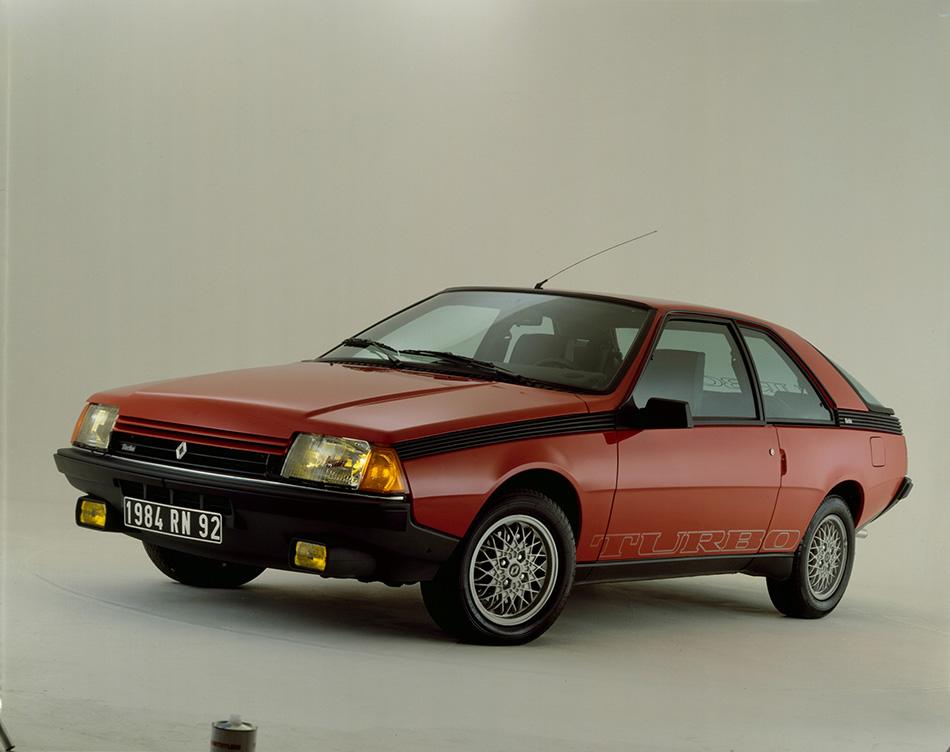With the launch of the Fuego in 1980, Renault met the challenge of producing a modern, affordable coupé.
The rebirth of the Renault coupé
At the end of the 1970s, Renault decided to replace the R15 and R17 coupés launched 10 years earlier. The idea was to develop a popular, modern coupé that would appeal to the general public. The car had to be sporty and elegant, compact on the outside and big enough inside to accommodate a whole family. Michel Jardin designed a model with sharp, aerodynamic styling. The Fuego had 2 original features: a special bumper mounting system and a glazed "bubble" tailgate.
Shape and function were perfectly matched to achieve a drag coefficient of 0.34, a best for Renault. This aerodynamic quality helped to keep noise out of the comfortable, well equipped interior. For the comfort of the occupants, the airy cabin also featured 2 front "petal" seats with built-in head restraints.

From a technical standpoint, Renault reused a number of proven parts, including the subframe of the R18 sedan and the front suspension of the 1975 R20 sedan.
The innovative power steering featured a built-in cylinder, with the cylinder and piston functions carried out by the rack and unit.
With the Fuego, Renault dropped the numbers-based system used since 1961 and started again to give its cars names, as in the times of the Dauphine, Ondine, Floride, Caravelle and others.
The Fuego Turbo
It took another 3 years for the range to gain a real sports model. The Fuego Turbo, launched in 1983, featured the engine of the R18 Turbo, developing 132 hp for 3,000 rpm. Result: a top speed of more than 200 kph and 0-100 kph in under 10 seconds. The Fuego Turbo boasted a number of major styling innovations, including a Turbo logo on the radiator grille, and aluminum "honeycomb" wheels.
The Fuego Turbo reached the peak of its success in 1984: it was visually aggressive, powerful and even affordable! But Renault had waited too long and its competitors had cornered the market. The Fuego disappeared in 1985. Traces of this visually striking vehicle remain in the film "Mais qui a tué Pamela Rose?" and in 2 James Bond movies.
Source: Renault













